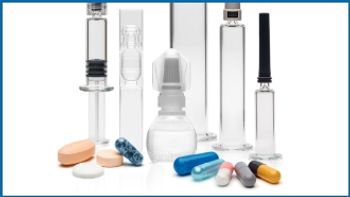
Equipment and Processing Report
- Equipment and Processing Report-07-16-2014
- Volume 0
- Issue 0
Flexible Packaging Machines Maximize Efficiency
Modular design and quick-changeover features help deliver flexibility and maximize return on investment.
To maximize return on investment (ROI) and operational efficiency, packaging lines need to be capable of handling new products, different product counts, and packaging changes with minimum retooling. Modular design and quick-changeover features help deliver this level of flexibility on integrated lines from original equipment manufacturers such as Uhlmann Packaging Systems and Bausch + Stroebel Machine Co.
For parenteral products, Bausch + Stroebel has devised a lock-and-key system to simplify removal and replacement of VarioSys modules within a Class A isolator from Skan. An inflatable seal in the L-flange hermetically seals the connection between each production module and the isolator. Production modules lyophilize product; fill and seal nested syringes, vials or cartridges; and fill and/or close bottles and vials. Filling occurs via peristaltic pump, valveless rotary piston pump, or auger and is compatible with single-use systems. Options include tub unpacking and modules for stability tests and product formulation.
Similar flexibility is available for solid dosage forms. Uhlmann’s Integrated Bottle Packaging Center (IBC) 120, for example, handles round, rectangular, and oval bottles ranging from 45 to 200 mm in height and 25 to 125 mm in diameter. A monoblock design mounts all functions on one frame in a length of less than 5 m, and a single touchscreen user interface centralizes controls for all the stations. When the operator identifies the product to be run, the machine automatically adjusts all the necessary stations, including desiccant feeding, tablet counting, tablet inspection, cotton insertion, and capping. "In a conventional layout, these processes would be performed with multiple machines—usually from multiple suppliers—with each using different operating systems,” said Ralf Klotz, regional sales manager for Uhlmann Packaging Systems, in an interview with Pharmaceutical Technology. A library in the controller stores previous run data and machine settings. “The library allows users to duplicate the last run settings identically,” said Klotz.
Changeover-related downtime is reduced by hygienic machine design, which eliminates product hiding places and areas where moisture or debris can collect and expedites the cleaning verification process. With no open conveyors between stations, cleaning involves a simple wipe and inspect, and there is no downtime associated with disassembly, reassembly, and manual adjustment of conveyor links.
Once the machine is clean, changeover between various shapes and counts of capsules, tablets, and gel caps involves swapping a few format parts. Format parts and tooling are plug-and-play, with each designed to fit precisely in its station. “Quick disconnects, ball detent locking, and pneumatic unclamping will speed removal and replacement of change parts,” reported Klotz.
Feeding systems and electronic tablet counter(s) are format independent and adjust automatically using stepper motors. If settings are not already stored in the controller’s library, Klotz said, “Operators simply ‘teach’ a new product into the controller by defining length/width/shape and counts, and the system self-adjusts to optimize performance.” Changeover to a different bottle diameter can be completed in six minutes and requires no hand tools.
A master shift register tracks each container, minimizes rejects, and supports serialization requirements. The modular design of the IBC 120 dedicates an area for coding and related inspection prior to the next process step. “Any failure in the process disables the next process steps through the shift register,” reported Klotz. This means that if the code is not legible, no filling occurs, and only faulty bottles are rejected. “This significantly minimizes rework,” he notes. It also minimizes network traffic since only verified bottles are passed downstream.
—Hallie Forcinio is Pharmaceutical Technology's packaging editor,
Articles in this issue
over 11 years ago
Ensuring Ergonomic Design in Sterile Transfer Portsover 11 years ago
Survey Shows Importance of Process Analytical Technologyover 11 years ago
Adapter Aids Positioning of Syringes in AutoinjectorsNewsletter
Get the essential updates shaping the future of pharma manufacturing and compliance—subscribe today to Pharmaceutical Technology and never miss a breakthrough.





